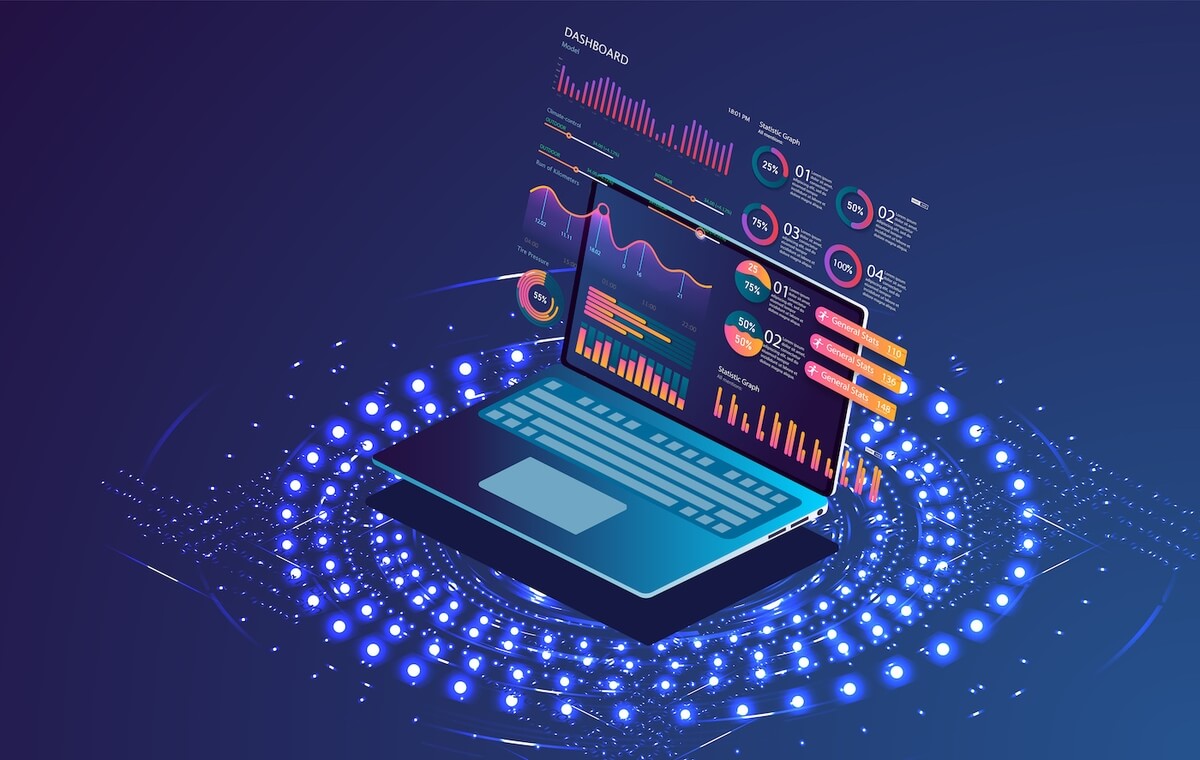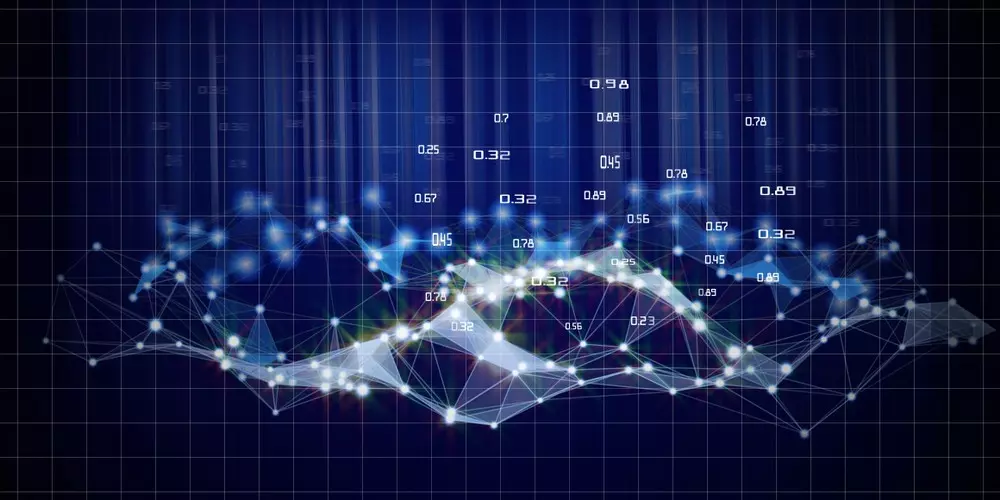Comments
- No comments found

Data mining and analysis can detect potential cyberattacks in several ways.
By analyzing large amounts of data and following a zero trust security framework, it is possible to quickly mitigate cyberattacks to protect your organization.
Data mining and analysis can uncover behaviorial patterns indicative of malicious activity and help to identify anomalies in the data that could indicate an attempted attack, such as an unusual spike in traffic or an unusual traffic source.
These techniques can also help identify previously known vulnerabilities in systems, which can be used to mitigate potential attacks proactively. Data mining and analysis are key tools for creating models that can predict and detect possible cyberattacks before they occur.
Data mining is the process of extracting meaningful insights from large datasets using algorithms and statistical models. It involves analyzing data from different perspectives and summarizing it into helpful information that professionals can use to make informed decisions.
Data mining enables businesses to make sense of the large amounts of data they collect and use it to identify patterns and trends. It can also help companies gain a competitive edge by uncovering new opportunities to increase sales, reduce costs and uncover fraud.
Data analysis is collecting, organizing and analyzing data to gain insights and draw meaningful conclusions. It involves extracting, cleaning, transforming and modeling data to uncover patterns and trends to make informed decisions.
Data analysis can support various activities, such as market research, customer segmentation, customer satisfaction and financial forecasting.
If you are interested in furthering your knowledge or pursing a career in the field of data analysis and cybersecurity then programs such as the Master’s in Cybersecurity online offered by St. Bonaventure University would be worth considering. This program provides comprehensive training in cybersecurity, network security and digital forensics principles and techniques.
Students in the program develop the skills to design, analyze and manage secure information systems and detect and respond to security incidents.

Let’s look at the many ways that data mining and analysis can strengthen a business’s operations:
Improved decision-making allows organizations to make smarter decisions based on the available data. Data mining and analysis can help organizations identify trends, patterns and correlations that can be used to make informed decisions about their operations.
It can help organizations optimize resources and identify new opportunities. By understanding the data and its implications, organizations can make better, more informed decisions, ultimately leading to improved business performance.
Businesses can quickly and accurately identify patterns, trends and relationships within large data sets through data mining and analysis. It can allow them to make more informed decisions, streamline processes and reduce costs.
By understanding their data better, businesses can make better decisions, optimize their operations and improve efficiency. This can result in cost savings and an improved bottom line.
Data mining and analysis can improve customer service by providing insights and understanding into customer needs, preferences and behaviors. By analyzing customer data, businesses can better understand their customers, allowing them to provide more personalized and tailored customer service.
This can involve more targeted, relevant marketing communications and more tailored product and service offerings. The use of data mining and analysis allows businesses to identify potential customer service issues before they become problems, helping to reduce customer complaints and dissatisfaction.
Additionally, data mining and analysis can also be used to monitor customer satisfaction levels, allowing businesses to identify areas for improvement in their customer service.
Better targeting is vital in data mining and analysis because it allows organizations to identify and target specific customer segments or demographics with tailored messaging.
By leveraging data mining and analysis, organizations can gain insight into customer behaviors, preferences and interests, allowing them to craft more effective marketing campaigns that better engage their target audiences.
Organizations can increase their customer acquisition and retention efforts by utilizing better targeting with data mining and analysis, leading to more sales and higher profitability.
Data mining and analysis is essential to risk management because it helps identify potential risks and inform decision-making. Data mining and analysis allow organizations to better understand the relationships between variables and their potential impact on outcomes.
By understanding these relationships, organizations can more accurately identify risk areas and make more informed decisions about mitigating those risks.

Below are the main ways data mining and analysis can be used to detect potential cyberattacks:
By carefully examining normal user activity, it is possible to identify suspicious behavior that could indicate a potential attack. This could include large amounts of unusual traffic, connections to previously unknown servers or websites or any other suspicious activity that could indicate malicious intent.
By monitoring user activity and analyzing the data, organizations can identify potential threats before they become an issue, helping to protect their networks and systems from potential cyberattacks.
Analyzing user activity can also provide valuable insight into user behavior, which can help organizations better understand their customer base and improve user experience. By understanding user behavior, organizations can create better customer experiences, improve customer service and identify areas for improvement in their products or services.
This technique involves analyzing log data from various sources to detect patterns of behavior that may indicate malicious intent. For example, if a user is accessing the same system from multiple locations or using enormous amounts of data, these could be signs of malicious activity.
The correlation of log data can also help identify trends in malicious activity by looking for patterns in log files over time. By identifying these patterns, security teams can better protect against future cyberattacks.
Businesses can also use this data to identify the source of an attack and trace the steps taken by the attacker. This can help security teams to better understand the attack.
Monitoring network traffic is essential when analyzing potential cyberattacks. Examining the traffic can help identify anomalies or unusual patterns that could indicate malicious activity.
This may include monitoring for large amounts of data being transferred from a single or multiple sources connecting to the same destination in a short period. Monitoring can also detect the use of atypical network protocols or numerous failed connection attempts.
This type of monitoring can help detect potential cyberattacks and other malicious activities, such as data theft or unauthorized access.
System logs record all the activity on a computer system, including the time, user, application and type of activity. By analyzing these logs, it is possible to identify patterns of activity that may indicate a potential attack or other malicious activity.
For example, an unusual number of failed login attempts from a specific user or IP address could indicate an attempted attack. Similarly, unusually high traffic from multiple addresses could indicate the presence of a botnet or a distributed denial of service attack.
Monitoring system processes involves using software and hardware tools to keep track of system processes and activities.
Businesses can identify malicious activity and detect potential cyberattacks by monitoring system processes, such as user logins, file accesses and network traffic.
By correlating system process data with known attack patterns it is possible to alert the security team when suspicious activity occurs. Organizations can make efforts to avoid cyberattacks and protect their systems and data by monitoring system processes and activities.
This method involves analyzing web traffic data to identify patterns consistent with malicious activity. The aim is to detect malicious requests before they can cause damage, such as data theft, disruption of services or fraudulent activity.
Through web traffic analysis, potential malicious requests can be identified and blocked, preventing potential attacks. By correlating data from multiple sources, such as web logs and network traffic, it is possible to identify malicious requests that may have previously gone undetected.
This type of data mining and analysis can help to protect networks from malicious attacks and help to ensure that the data stored on the network is secure.
Intrusion detection systems (IDS) are cybersecurity tools used to detect malicious traffic on a network. They do this by monitoring network traffic and analyzing it for suspicious activity. Businesses can use an IDS to detect a wide range of cyberattacks, such as malware, phishing, denial of service and unauthorized access.
Data mining and analysis identify potential cyberattacks by looking for patterns in traffic data. This allows IDS to detect potential threats before they have occurred, allowing for a quick and effective response and prevention.
The use of an IDS can be an effective way to detect potential cyberattacks. An IDS monitors the network traffic to collect network data and analyzes it to identify potential threats.
Open ports can be entry points for malicious connections, allowing attackers to access a system. By monitoring open ports, organizations can detect suspicious connection attempts from malicious actors attempting to gain access to their networks.
This type of data mining and analysis can also help identify patterns of connections that could indicate malicious activity, such as unauthorized port scan attempts or attempts to exploit known vulnerabilities.
Honeypots are dedicated systems businesses can set up to detect potential cyberattacks. They are computer systems that an organization purposely sets up to act as a trap for malicious actors.
This trap lures attackers into revealing their attack methods and other malicious activities. Businesses can then use the data collected from the honeypot to detect and prevent future attacks on the organization’s network.
Using a honeypot can be an effective way to detect and mitigate potential cyberattacks.
Machine learning algorithms can be used to analyze network traffic, detect malicious patterns and anomalies and identify suspicious behavior. By applying machine learning algorithms to data sets, these algorithms can learn to recognize patterns that indicate malicious behavior and detect cyberattacks before they occur.
Machine learning algorithms can also help identify malicious actors, monitor user activity and detect unusual behavior. Additionally, they can be used to detect malicious software and malware and help identify the source of a potential attack.
Organizations can better protect their networks and data from potential cyberattacks by using machine learning algorithms to detect malicious activities.
This method involves analyzing and interpreting network packet data to detect patterns and anomalies indicative of malicious activity. Packet data includes IP addresses, port numbers, protocol types and payload data.
Analyzing this data makes it possible to detect malicious behavior, such as scanning for vulnerable hosts, packet flooding and malicious code injection. Businesses can also use this data to analyze the source of the attack and the intended target.
By detecting and analyzing malicious behavior, organizations can take measures to protect their networks against potential cyberattacks.
Data mining and analysis can be powerful tools in preventing and detecting potential cyberattacks. By leveraging the vast amounts of data available, organizations can identify anomalies, detect malicious activity and proactively protect their networks.
Data mining and analysis can also provide valuable insights into user behavior and help organizations better understand the threat landscape. By using data mining and analysis to detect potential cyberattacks, organizations can better protect their networks and mitigate the risks of a successful attack.
Leave your comments
Post comment as a guest